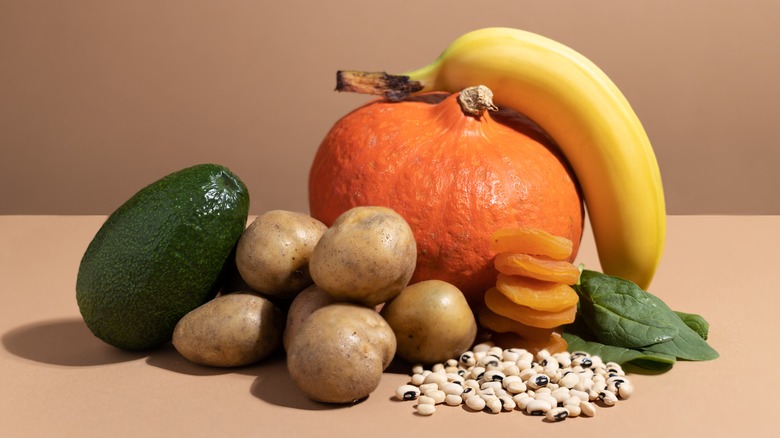We may receive a commission on purchases made from links.

ORION PRODUCTION/Shutterstock
With every heartbeat, your heart pumps nutrient-rich blood through your blood vessels. If you have a sodium-rich diet, your body retains more fluid in your blood. This high volume of blood puts more pressure on your blood vessels that leads to high blood pressure. Over time, you could develop small tears in your blood vessels, causing plaques to build up and narrow your arteries. As a result, your blood pressure continues to increase.
One way to reduce your blood pressure is to decrease the ratio of sodium to potassium in your diet. Most Americans get too much sodium and not enough potassium. By drinking pear juice every day, you’ll be giving your diet a nice boost of potassium.
An 8-ounce glass of pear juice (like Pomona Organic Pear Juice) provides 290 milligrams of potassium and just 2 milligrams of sodium. The American Heart Association recommends 3,400 milligrams of potassium a day for men and 2,600 milligrams for women. However, you’ll need more potassium in your diet if you want to prevent or treat high blood pressure.
How potassium reduces blood pressure

Momo Productions/Getty Images
Potassium is a necessary electrolyte that helps regulate your nervous system, heart rate, and blood pressure. Potassium also regulates the water in your cells, while sodium controls the water outside your cells. When your body has too much sodium and not enough potassium, this causes an imbalance of fluid in your body and increases your blood pressure. Adding more potassium to your diet helps balance the effects of sodium and relaxes your blood vessels.
A 2015 review in the Journal of Hypertension analyzed the results of 15 controlled trials on the role of potassium supplementation on blood pressure. Potassium reduced systolic blood pressure by 4.7 millimeters of mercury (mmHg) and diastolic by 3.5 mmHg. For people with high blood pressure, potassium had a greater effect on blood pressure, reducing systolic blood pressure by 6.8 mmHg and diastolic by 4.6 mmHg.
What reduced people’s blood pressure the most was lowering the sodium-to-potassium ratio in their diets. This means adding more potassium to your diet while also lowering your dietary sodium. If you replace a can of Coke with a glass of pear juice, you’ll shave off 66 calories and more than 55 milligrams of sodium.
Consider potassium-rich options to reduce your blood pressure

Kreminska/Shutterstock
The American Heart Association suggests up to 5,000 milligrams of potassium for people with high blood pressure. That would mean drinking 17 glasses of pear juice to meet that guideline. Even though pear juice is a good source of potassium, it’s also high in sugar. Rather than rely on pear juice alone to meet your potassium needs, you can turn to other foods that are rich in potassium to help lower your blood pressure.
The Dietary Approaches to Stop Hypertension (DASH) eating plan encourages foods rich in potassium and limits sodium, added sugar, and saturated fats. If you’re trying to lower your blood pressure, foods like bananas, sweet potatoes, salmon, and yogurt are good sources of potassium. You’ll also need to cut back or cut out processed foods because they’re often sources of hidden sodium. Rather than reach for the salt shaker, opt for a good salt substitute like Nu-Salt, which is made from potassium rather than sodium.
You should consult with your doctor before using salt substitutes or potassium supplements, especially if you have chronic kidney disease. Some medications, such as ACE inhibitors and certain diuretics, could interact with potassium. Although your kidneys will typically filter out excess potassium, too much potassium can cause nausea, irregular heart rate, or muscle weakness.
Credit: healthdigest.com










